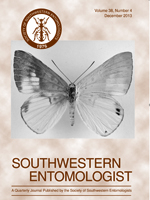Meccus longipennis (Usinger) is one of the most important species involved in the transmission of Trypanosoma cruzi Chagas to human populations in Mexico. It has been reported from 10 Mexican states, including those with zero seropositive human cases of infection by T. cruzi, to one with 120,000. In that distribution area, the percentages of infection by T. cruzi (0–97%) in M. longipennis, as well as the environmental characteristics, are very different. The aim of this study was to evaluate the biological parameters related to the life cycle of M. longipennis in populations from localities with different numbers of human infections as well as different environmental conditions. A cohort of each of the three studied peridomestic populations from different areas of Mexico was maintained under similar laboratory conditions and compared with each other. Data related to the life cycle, such as the number of blood meals to molting, mortality rates, egg viability rates, and female fecundity, were recorded. Mean time from first-instar nymph to adult stage, the number of blood meals between molts as well as the mortality rate was greater in the population from Huazamota (Durango, northern Mexico). The female-to-male ratio and fecundity of females per day were similar among populations. The observed egg viability was less for the population from Huazamota than from the other two sites (Presa de los Serna in Aguascalientes State and La Palma from Michoacán State). Based on our results, it is suggested that the population from Huazamota represents a lower risk of vectorial transmission of T. cruzi than the other two populations and that environmental conditions from the site of origin of each population influence the biological parameters of the populations.
How to translate text using browser tools
1 December 2013
Variability of the Biological Characteristics between Meccus longipennis (Usinger) (Hemiptera: Reduviidae) Populations under Laboratory Conditions
José Alejandro Martinez-Ibarra,
Benjamín Nogueda-Torres,
Gustavo Seda-Gaspar,
Fausto Ambriz-Galván
ACCESS THE FULL ARTICLE

Southwestern Entomologist
Vol. 38 • No. 4
December 2013
Vol. 38 • No. 4
December 2013




